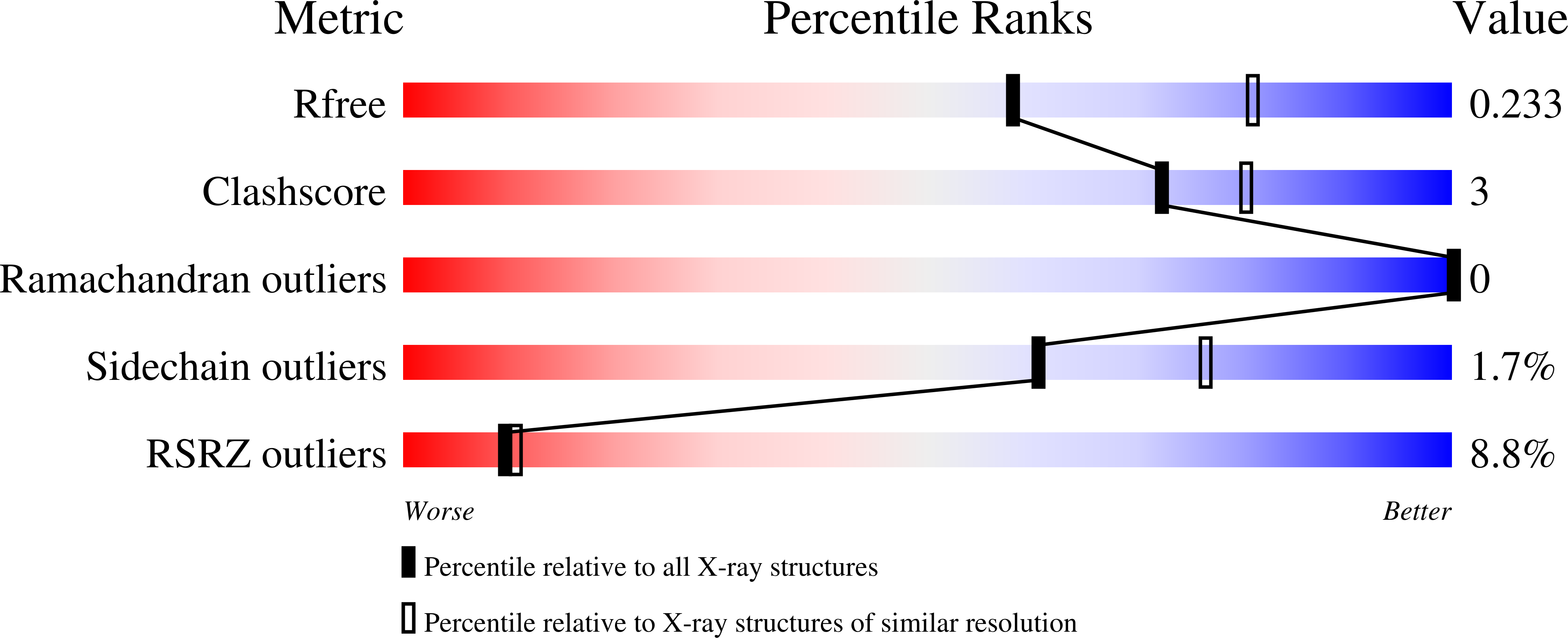Inhibiting oral intoxication of botulinum neurotoxin A complex by carbohydrate receptor mimics.
Lee, K., Lam, K.H., Kruel, A.M., Mahrhold, S., Perry, K., Cheng, L.W., Rummel, A., Jin, R.(2015) Toxicon 107: 43-49
- PubMed: 26272706
- DOI: https://doi.org/10.1016/j.toxicon.2015.08.003
- Primary Citation of Related Structures:
5BP5, 5BQU - PubMed Abstract:
Botulinum neurotoxins (BoNTs) cause the disease botulism manifested by flaccid paralysis that could be fatal to humans and animals. Oral ingestion of the toxin with contaminated food is one of the most common routes for botulism. BoNT assembles with several auxiliary proteins to survive in the gastrointestinal tract and is subsequently transported through the intestinal epithelium into the general circulation. Several hemagglutinin proteins form a multi-protein complex (HA complex) that recognizes host glycans on the intestinal epithelial cell surface to facilitate BoNT absorption. Blocking carbohydrate binding to the HA complex could significantly inhibit the oral toxicity of BoNT. Here, we identify lactulose, a galactose-containing non-digestible sugar commonly used to treat constipation, as a prototype inhibitor against oral BoNT/A intoxication. As revealed by a crystal structure, lactulose binds to the HA complex at the same site where the host galactose-containing carbohydrate receptors bind. In vitro assays using intestinal Caco-2 cells demonstrated that lactulose inhibits HA from compromising the integrity of the epithelial cell monolayers and blocks the internalization of HA. Furthermore, co-administration of lactulose significantly protected mice against BoNT/A oral intoxication in vivo. Taken together, these data encourage the development of carbohydrate receptor mimics as a therapeutic intervention to prevent BoNT oral intoxication.
Organizational Affiliation:
Department of Physiology and Biophysics, University of California, Irvine, CA 92697, USA.

















